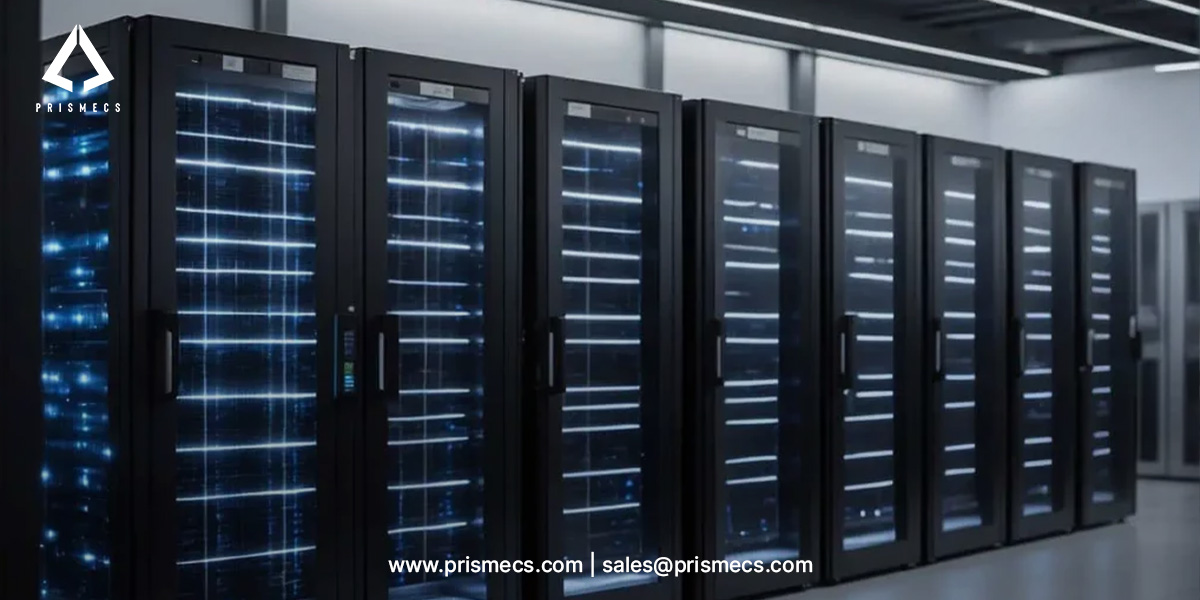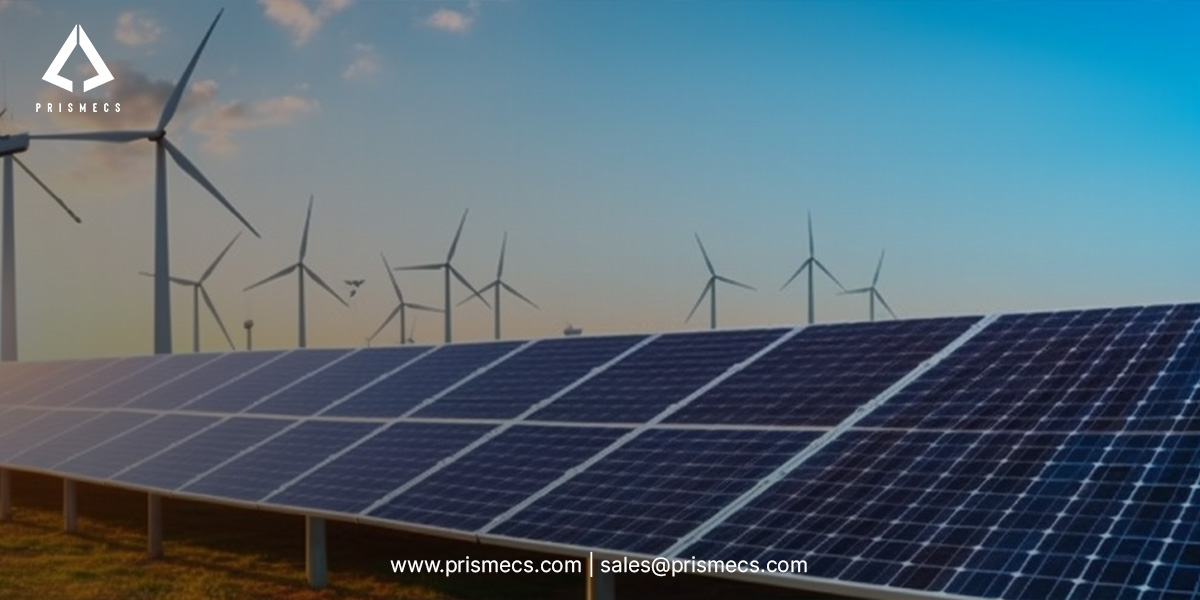Data Centers
October 24, 2024

In the technological age, everything is electronic. Data centers significantly impact the world. They process, store, and distribute information, and their role is essential in modern technology.
Nonetheless, their rapid growth cannot be overlooked, as they result in high energy consumption, which poses a significant drawback.
Data centers are facilities that require an enormous amount of energy, which they get from electricity. The burden on the market rises with increasing data consumption. Companies' data needs continue to grow. Minimizing data center energy consumption becomes a necessary task.
With the rise in data demand, data centers expand to keep up. Implementing the optimum technologies in renewable energy, power, and cooling will reduce energy use and improve efficiency.
This blog will discuss data center problems and explore energy efficiency programs. These programs are breakthrough technologies that aim to optimize energy consumption.
According to the International Energy Agency (IEA), data centers consume about 1% of global electricity.
This indicates a low share of power consumption compared to the total. Digital growth is driving data centers to consume more electricity. The expansion of AI increases computing power demand. Machine learning and big data also contribute to this demand.
Data centers must support higher GPU and server performance, which increases their power footprint. Thus, data center operators are considering new technologies that do not decrease performance while ensuring energy efficiency.
The global hyper-scale data center market is valued at USD 130.2 billion in 2024. By 2032, projections estimate it will reach approximately USD 935.3 billion. This growth represents a compound annual growth rate (CAGR) of 27.9% from 2023 to 2032.
Some of the key technologies for reducing the consumption of data centers are mentioned below.
One of the most promising advancements in reducing data center energy consumption is AI (artificial intelligence). AI monitors, predicts, and optimizes energy use in data centers, enabling precise power management.
AI improves cooling systems management. These systems make real-time decisions. AI modifies temperature settings and controls cooling loads. It also distributes energy among servers.
As computing power increases, so does the need for efficient cooling mechanisms. Traditional air-cooling systems struggle with the energy intensity of modern data centers, and powerful processors increase this challenge.
Liquid cooling provides a more effective alternative. It works well in high-performance computing (HPC) settings and is also great for AI applications that use energy-hungry GPUs.
A data center's hardware equipment is a significant driver of energy consumption. Nowadays, data centers choose more energy-efficient servers, processors, and storage devices.
As a result, their power consumption has decreased. Hardware devices like SSDs and low-power servers help reduce power consumption. They maintain high performance while saving energy.
According to the IEA, data center energy consumption will increase by 50% by 2030.
Hardware efficiency based on the newest technology drives data demand. The workload on servers continues to increase. Data centers can reduce energy consumption and achieve more sustainable operations by upgrading to new hardware technologies designed for energy-efficient utilization.
Almost every data center manager gets clean energy from this planet's natural environment. The centerpiece of this energy mix includes solar, wind, and hydropower. This allows data centers to rely less on international electric grids, which often depend on fossil fuels. They adopted this method, which reduces their carbon footprint and ensures the environment's protection in the long run.
Virtualization has enabled a revolutionary shift toward electricity conservation in data centers. The method data centers adopt enables virtualization, including storage and networking resources.
It maximizes the efficiency of existing hardware. Virtualization allows running two or more applications on one physical machine. This approach uses existing hardware and consumes less power.
Pioneering in this center industry includes the invention of modular data centers. These ready-to-use data units need no extra setup, and developers can quickly create them to the required size.
This makes them an energy-efficient solution for data growth. They are designed as energy-efficient modular data centers and feature advanced cooling technologies that implement lower power consumption strategies.
These units often use renewable energy. Engineers design them to maximize energy efficiencies, making them ideal for businesses looking to scale operations. They help companies to scale without significantly increasing energy consumption in data centers.
Read Also: Why Your Business Should Invest in Green Data Centers Now
Cooling systems consume a large part of the energy in a data center. As machine load increases, the necessity of controlling the heat to avoid overheating increases. Energy and cooling innovations are integral to the three main areas: data center energy reduction and operational efficiency improvement.
Free cooling is an innovative approach that uses the natural environment to cool data centers. It harnesses the coolness of the natural environment, which benefits data centers. Still, a traditional chilling method using air conditioning and fans can do the job.
Nevertheless, the air, water, or evaporation method can also help lower temperatures in data centers. Consider data centers in colder climates. They use free cooling systems to reduce energy demand. These systems can substitute traditional cooling systems.
Further, another hot and cold aisle containment technique is an effective cooling power consumption reduction method. The hot and cold aisle isolation method separates hot and cold airflow in the data center air to prevent them from mixing. Thus, the cooling units can work more efficiently, producing a high-efficiency gain.
Hot aisle containment captures the servers' hot air and directs it to the cooling systems. Cold aisle containment allows the cooling equipment to concentrate rather than the areas with less heat. This method improves the cooling system's efficiency. The cooling infrastructure consumes less energy as a result.
The demand for data and computation will continue to rise. Therefore, managing energy consumption in data centers will remain paramount to both operators and organizations. The good news is that the industry has made great strides in discovering more energy-efficient and sustainable solutions.
The average number of data centers is pretty small in terms of power, with a demand of 5-10 megawatts (MW). Large hyperscale data centers are increasingly common. They have power demands of 100 MW or more. Their annual electricity consumption equals the demand from 350,000 to 400,000 electric cars.
The mix of AI-powered energy management, liquid cooling, energy-efficient equipment, and renewable energy is. It is a way of decreasing energy use while still meeting the needs of modern computing.
The future of data center energy consumption depends on accepting new technologies. These technologies improve tooling and cooling, save power, and optimize operations.
These solutions have transformed the data centers industry from AI-powered energy management to renewable energy integration. These technologies help data centers keep up with the growing demand for computing power. They also reduce the environmental impact of data centers.
By employing these techniques, data centers can avoid environmental consequences, contribute to a greener future, and assist the rapid technological development of the digital world.
New technologies will be fundamental for data center power needs. They will help maintain energy consumption within sustainable limits.
Prismecs is a leader in data center optimization. We will help you reduce energy consumption and align with industry sustainability best practices. Our commitment to efficiency and environmental responsibility reduces operational costs and supports global efforts to mitigate climate change.
We are a leading provider of data center energy optimization solutions. As data demands continue to rise, Prismecs' expertise ensures that data centers remain high-performing and environmentally responsible. To avail of our data center services, call us at +1 (888) 774-7632 or email us at sales@prismecs.com.
Tags: Data Center Energy Consumption Consumed By Data Centers Power Consumption Data Center Power Data Center Energy Energy Efficiencies
Enhance Efficiency in the Power Generation Industry with Prismecs
Enhance efficiency in power generation with Prismecs’ expert solutions, from advanced technology i...

Top Trends Shaping the Future of Renewable Energy
Explore the key trends shaping renewable energy's future, including solar, wind, energy storage, gri...

Innovative Technologies to Minimize Data Center Energy Consumption
Discover cutting-edge technologies to reduce data center energy consumption, improve efficiency, and...